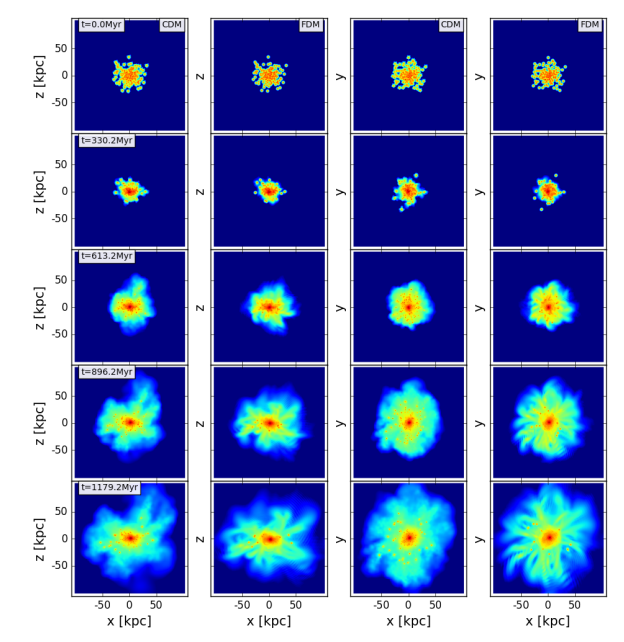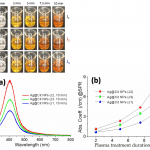Sangnam Park, Dongsu Bak, Jae-Weon Lee and Inkyu Park
Journal of Cosmology and Astroparticle Physics, Volume 2022, December 2022
Abstract
We perform a numerical comparison between the fuzzy dark matter model and the cold dark matter model, focusing on formation of satellite galaxy planes around massive galaxies. Such galactic dynamics with controlled initial subhalo configurations are investigated using GADGET2 for the cold dark matter and PyUltraLight for the fuzzy dark matter, respectively. We demonstrate that satellite galaxies in the fuzzy dark matter side have a tendency to form more flattened and corotating satellite systems than in the cold dark matter side mainly due to the dissipation by the gravitational cooling effect of the fuzzy dark matter. Our simulations with the fuzzy dark matter typically show the minor-to-major axis ratio c/a of the satellite galaxy planes to be 0.21 ∼ 0.30; this well matches the current observed value for the Milky Way.



